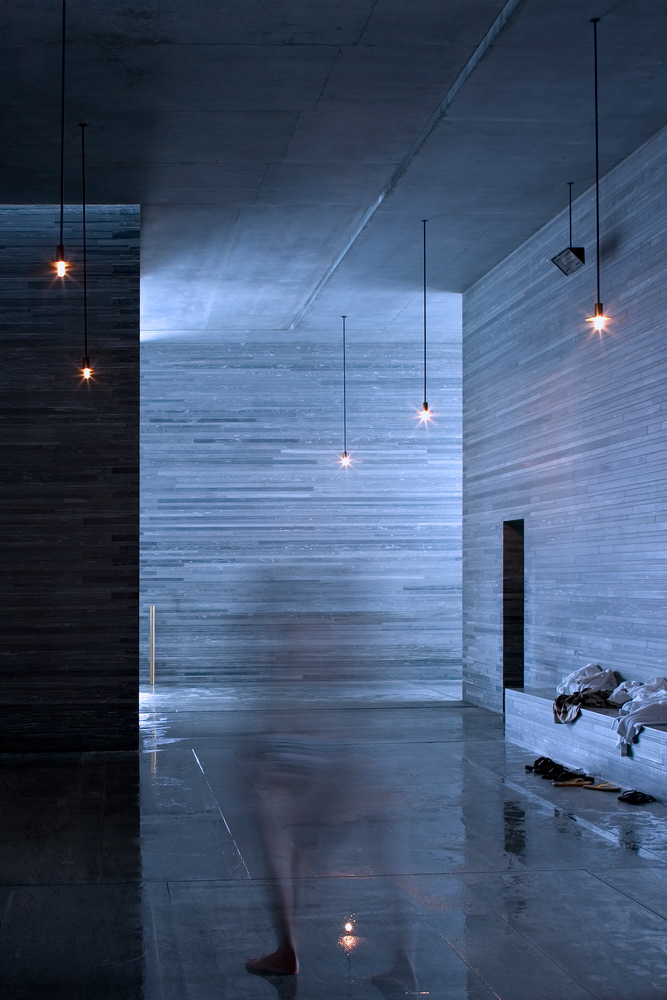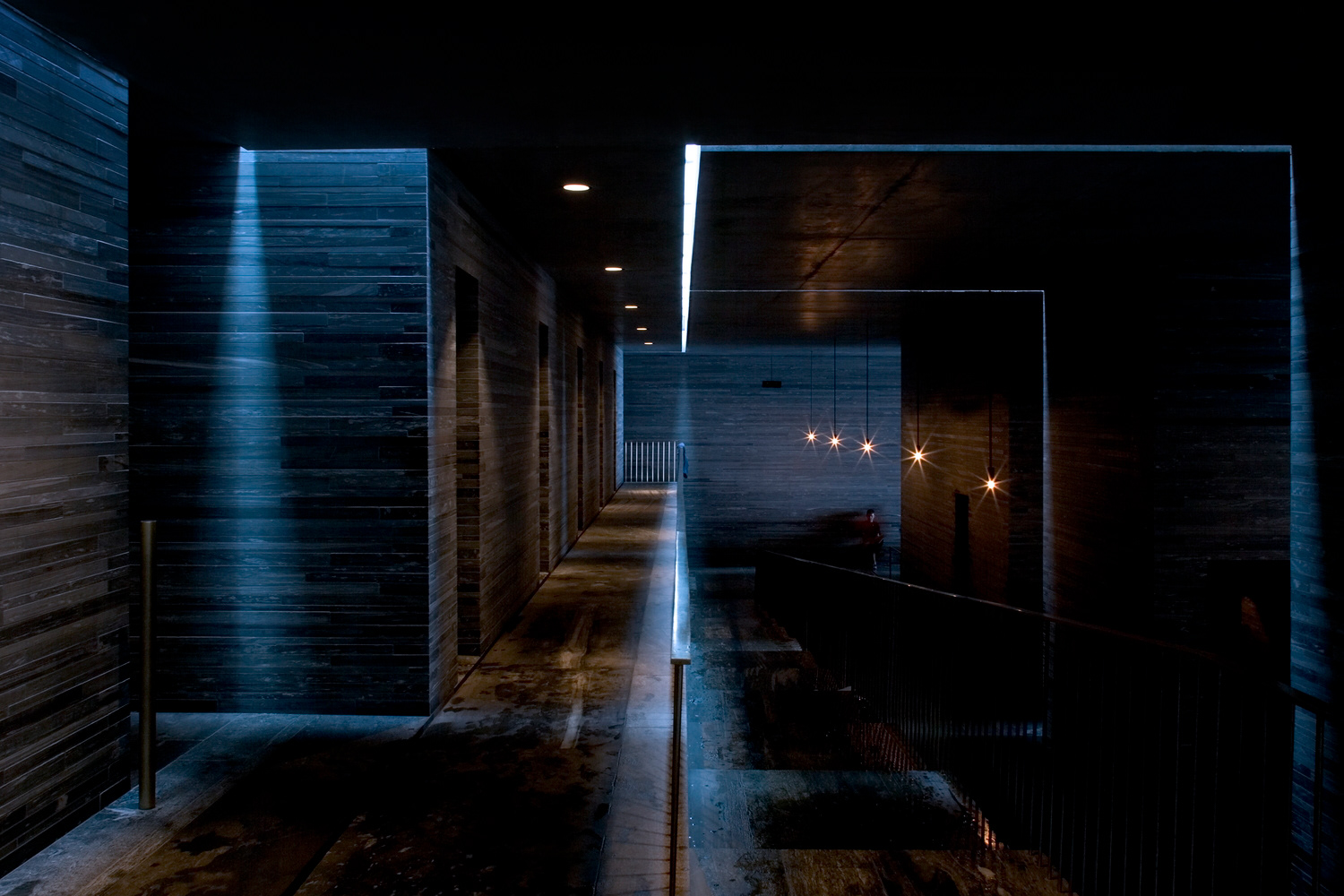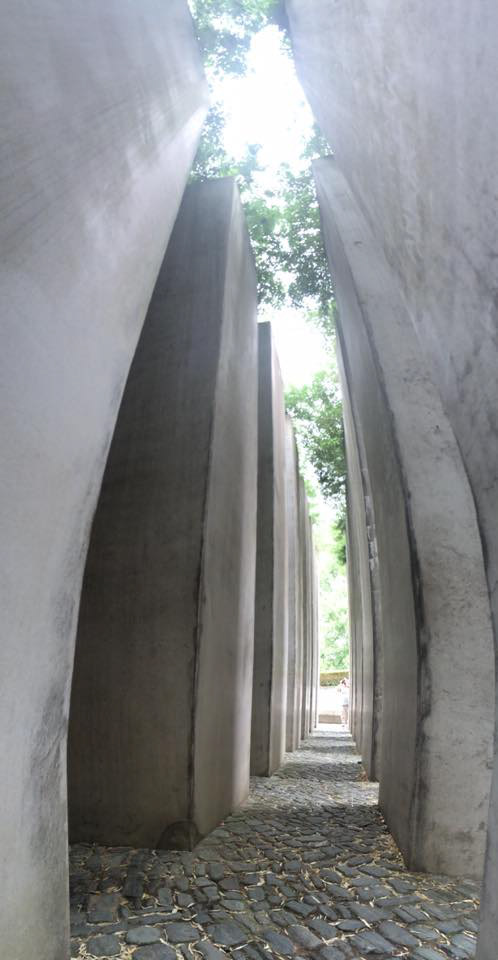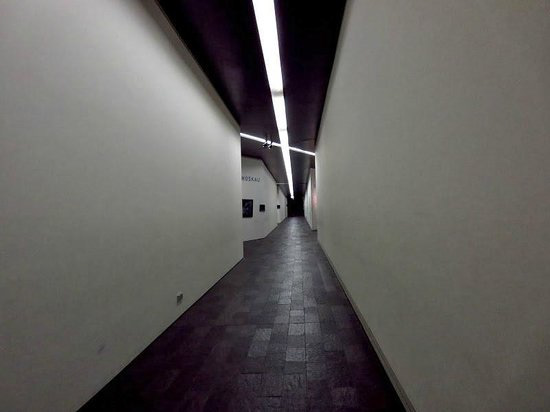



Use of light, materiality and form are all part of a designer’s toolkit for conveying their design. But use of space and what defines it, is an aid that is often overlooked. When does public space become private? When does a house become a home? When does negative space become positive? These are questions far to irregularly asked by designers, who often forget one of our most powerful mechanisms for affecting the human experience of space.
Peter Zumthor is an architect who designs with constant awareness of the user experience of his designs. Therme Vals, designed by Zumthor in 1996, is a great example of how to create an atmosphere using space, changing a visit to the baths into a sensory experience. The structure is built into a hillside and aimed to have a cave like feeling. The main void is carved into with smaller spaces all holding a different bathing experience providing a banquet of sensory confrontations.
‘Atmospheres’, a book written by Zumthor, delves into the philosophy of Zumthors designs and the root of his design decisions. In referencing the thermal baths, he talks about how he guides people through the building, “Architecture is a spatial art, as people always say. But architecture is also a temporal art... It was incredibly important for us to induce a sense of freedom of movement… Hospital corridors are all about directing people, for example, but there also the gentler are of seduction, of getting people to let go, to saunter, and that lies within the powers of an architect”. This mantra is prevalent within the thermal baths as he subtly encourages the user to explore. A use of space which is far harder to finesse than fully controlling the users path through a space. He frequently discusses the human experience of a space rather than the aesthetic appeal. While discussing how he catered to the senses within Therme Vals, he states, “something would be drawing me around the corner – it was the way the light falls, over here, over there: and so I saunter on – and I must say I find that a great source of pleasure.”. This is a great example of how Zumthor subtly facilitates the users exploration around a space, by creating treats for the eyes, ears, touch and nose, spurring you on to discover more.
Another example which uses space well as a tool is Daniel Libeskind’s 2001 Jewish Museum in Berlin. He uses space to control the senses, but not for delight, rather to confront negative emotions that come holocaust and to create at least an ounce of the unease felt by those affected. Within the museum, Libeskind designed a void room, which uses space to make the user feel extremely uncomfortable. The room is sixty six feet high and features nothing but one small window and a door. Light enters via the window located at the very top of the void, representing a metaphorical light that cannot be reached, designed to give the feeling of hopelessness felt by many during the holocaust, and the only one way in, a heavy steel door which echoes around the void when opened and closed. Entering via the lower galleries, you are not guided through the space and are given intermittent views of the path ahead, making navigating the building difficult and making you lose sense of direction. The floors on this level are also slightly on a gradient, giving the sensation of something being slightly wrong and unease. “One feels a little sick walking through it. But it is accurate, because that is what perfect order feels like when you leave the history of Berlin.” says Libeskind. The museum is a perfect example of how space can be used, not only for positive experience, but to manipulate emotions negatively without the user even realising why.
Space is a tool that when designed well, can be more powerful than affecting any other sense. Spatial design is something which sets architects and interior designers apart from other specialism’s and creates the strong draw I feel towards the subject. The ability to manipulate emotion through experience of space, with it affecting every human throughout every hour, minute and second of our day. Most of the time, this is without us even noticing the designer’s decisions effect on our psyche.